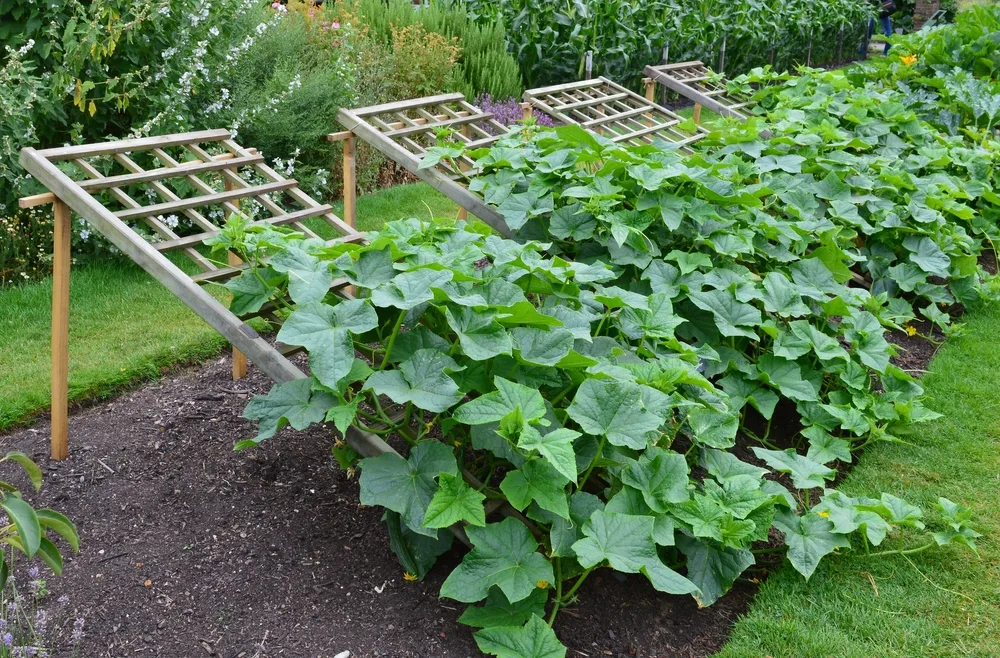Using a trellis in your garden for cucumber plants is a smart way to keep your space organized and visually pleasing.
Moreover, aside from appearing orderly, trellis often offer extra advantages to climbing plants by keeping leaves off the ground—this can enhance airflow, decrease pest attacks, and lower the chances of soil-related diseases taking root.

Cucumbers are classified as climbing plants, meaning they are designed to grow upwards by clinging to a supporting structure, such as a trellis.
The tendrils on cucumber plants, resembling thin stems, enable the plants to elevate towards sunlight and climb up structures while doing so.
Some gardeners frequently opt for this method to achieve the highest yield possible from their plants. However, it is crucial to understand misconceptions about training cucumbers on trellises.
First and foremost, although cucumbers are climbing plants, they may not initially climb up a trellis by themselves. They will probably require support at the beginning.
Select the appropriate trellis and provide support for your plants
Encourage the vines by winding them around the trellis to promote vertical growth. When the cucumber plants are young, you can offer even more assistance by securing the vines to the structure.
Secure the cucumber plants with rope, cable ties, or twine fastened around the points where the leaf extends from the stem. Fasten them loosely and remove the ties as they grow to prevent them from strangling your cucumbers.
Another reason your cucumbers may fail to climb is if you have the wrong type of trellis. Since cucumbers use tendrils to climb, they thrive on wire mesh trellises or sturdy wood and twine.
So, while there are numerous trellis concepts to optimize your outdoor area, not all are suitable for cucumbers.
Additionally, ensure you’re planting vining varieties rather than bush varieties — bush varieties flourish in tomato cages, not trellises.
Provide ample space for cucumber plants
There are common errors people make when planting cucumbers. And one of them, particularly relevant to trellis cultivation, is not allocating enough space for your plants.
There’s a misconception that you can plant your seeds closer together when growing vertically, which is untrue.
Your seeds still need to be spaced apart as recommended for ground cultivation. Remember that the roots require the same amount of space to spread beneath the trellis as in conventional gardening practices.
Plant your seeds approximately 8 to 12 inches apart to prevent competition for nutrients and water.
Moreover, as the vines begin to sprawl vertically, it’s advisable to trim excess foliage. Crowded plants can impede air circulation and attract pests.
The cucumber beetle is a notable pest to watch for early in the season. Opting for a less bitter variety like burpless can help deter them from your plants.
